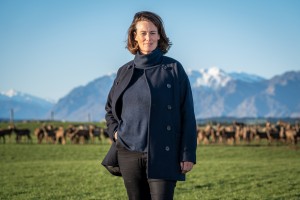Feb 17, 2023
In two years, all deer farmers will be paying greenhouse gas levies. Details of the programme will be decided by the Cabinet in March. But the amount farmers will pay will likely be much less than was proposed by the government a year ago.

The government outlines the agricultural emissions pricing system in the new report.
Before the Christmas break, as required by legislation, the government released a report on pricing agricultural emissions. ‘Pricing Agricultural Emissions Under Section 215 of the Climate Change Response Act 2002’ summarised the emerging trends from the 23,000 submissions to its consultation. The government will soon release a summary of public submissions on that report.
The report shows farmers will also be earning credits for storing carbon in vegetation that doesn’t qualify for inclusion in the emission trading scheme. How much they will earn is also undecided, but the government has agreed to reward farmers who offset their emissions by planting trees or restoring native bush blocks.
For farmers with properties where trees are not an option and where there is no practical way to reduce emissions, transitional assistance may be offered to reduce the financial impact of methane and nitrous oxide levies. How much, is again undecided.
DINZ chair Mandy Bell says this is much better than the original proposals and is an endorsement of the decision of farming groups and Māori interests to engage with government through the He Waka Eke Noa (HWEN) partnership.
“We understand how tough things are on farm at the moment with adverse weather and uncertainty about future government impositions on farming. We are still advocating for our farmers through HWEN, as there is a lot more detail that needs to be agreed, but the direction of travel is looking much more promising. While no farmer will welcome paying a GHG levy, we are now cautiously optimistic that we will have a regime that does not threaten the viability of hill and high-country farmers,” she says.

Mandy Bell: “The direction of travel is looking much more promising.”
“Until the detail is announced by the government, it is not possible to calculate the precise impact of emissions levies on individual farms. In the meantime, I encourage farmers to consider what they might do on their farms to reduce their net emissions and hence, their levies.”
Bell says most deer farmers have understandably been concerned about the impact that emissions levies might have on the viability of their farms.
“At the same time, they are aware of growing public and market concerns about the impact of agriculture on global greenhouse gas emissions. Both the main political parties and indeed, many farmers, want to see these emissions reduce – so long as food supply is not affected,” she says.
“The problem is that, short of developing a new income stream – such as planting trees for carbon – there is no off-the-shelf technology available that deer farmers can use to reduce their carbon emissions. Increasing productive efficiency, such as increasing growth rates or fawning percentages, makes good business sense and helps reduce emissions intensity, but it doesn’t shift the needle very far.”
She says that the HWEN partners, including the government, now agree that levies on methane and nitrous oxide should be no more than is needed to incentivise the adoption of mitigation technologies and cover the costs of the scheme, and to generate funds for research into emission lowering technologies.
“Previous government modelling envisaged scenarios from a ‘low’ of eight cents a kg of methane, to a ‘high’ of 14 cents. Nothing has been announced as yet, but the government has positively responded to a proposal from the HWEN partners that the methane levy rate should start at no more than five cents a kg of methane and be fixed at that level for the first five years. Levy rates in 2030 should not exceed eight cents.”
DINZ chief executive Innes Moffat says DINZ is working with members of HWEN to address how farmers whose profitability may be severely impacted because of a lack of access to mitigations or sequestration can be provided with transitional assistance until mitigations are available.
“The HWEN partners are also working on how all genuine sequestration on farms will be recognised by either the ETS or the HWEN on-farm calculator.
“On many extensive farms, if the right trees are planted in the right places, there may be little or no livestock reduction in deer production. Indeed, on some farms, deer may benefit from additional shade and shelter.”
In March, Cabinet is expected to decide how agricultural emissions will be priced. Legislation will then be prepared to support the pricing system that will be introduced in 2025.
For more information, click here >>

